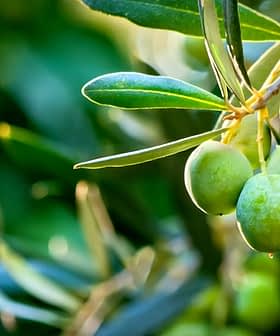Table Olive Consumption Has Doubled Since 1999
Table olive consumption has increased most in the largest table olive producing countries. Raised awareness of the health benefits of olives may be partially responsible.
Over the past three decades, global table olive consumption has grown by about 179 percent, according to data from the International Olive Council.
The main characteristic of this evolution is the growth of consumption in the non‑E.U. countries, which has risen steadily in recent decades
The bulk of this consumption increase has come from key table olive producing countries. The IOC also suspects that increased awareness in the health benefits of table olives has also helped to spur growth in places such as European Union countries.
“The main characteristic of this evolution is the growth of consumption in the non‑E.U. countries, which has risen steadily in recent decades,” Juan Vicente Calvo, the head of research and economic statistics at the IOC, told Olive Oil Times. “The European Union has remained stable in the recent decades.”
See Also:Table Olive NewsEgypt, which is the world’s second largest table olive producer, and Algeria, the fourth, both experienced far and away the highest levels of growth, with consumption increasing by 3,260 percent and 2,330 percent, respectively.
Over the same period of time, table olive consumption in Turkey more than tripled, while consumption in European Union countries grew by nearly 70 percent.
The combined markets of the European Union, Egypt, Turkey and the United States currently account for about 57 percent of global table olive consumption.
However, it is Albania and Syria that lead the way in global table olive consumption per capita, with the two Mediterranean nations consuming 10.8 and 10.1 kilograms per person each year, respectively.
Algeria is the third largest consumer per capita and the largest among IOC nations, with each person eating on average 7.2 kilograms per year. The fourth highest rate is Egypt and Turkey, both of which consume 4.1 kilograms per capita. By comparison, the United States only consumes 0.6 kilograms per capita.
During the past three decades, table olive production has more than tripled, with total production rising from 950,000 tons in 1990/91 to 2,953,500 tons in 2017/18. The majority of this growth has been spurred by the Mediterranean basin and North Africa.
Egypt, Turkey, Spain, Algeria, Greece, Argentina, Iran and Morocco have seen the largest increases in table olive production over this time period.
“The average production is growing up accordingly with the consumption,” Vicente Calvo said. “The production is increasing due to the fact that new plantations are being installed and existing ones restored.”
Egypt recently announced an ambitious plan to become the world’s largest table olive producer, which would involve planting 100 million new olive trees by 2020.
Spain, which in recent years has boosted olive yields, in part, due to more efficient agricultural techniques, is currently the largest global table olive producer, harvesting 613,000 tons of table olives in the 2017/18 season.
Table olive production has also increased substantially in Turkey, rising by 14 percent to 455,000 tons.
“The use of new semi-intensive and extensive plantations with high-density trees per [acre] increase the production,” Vicente Calvo said. “They are also working with grafts, more efficient water procedures as well as improving the mechanization and dynamism of the sector.”
Outside of IOC producing nations, table olive production in both Mexico and the United States is estimated to have grown by 11 percent and nine percent, respectively.
Syria is the only country that is expecting a major decrease in table olive production this year, with a decline of about 47 percent. The ongoing civil war and Turkish occupation in the north of the country are widely seen as the reasons for this decrease.








